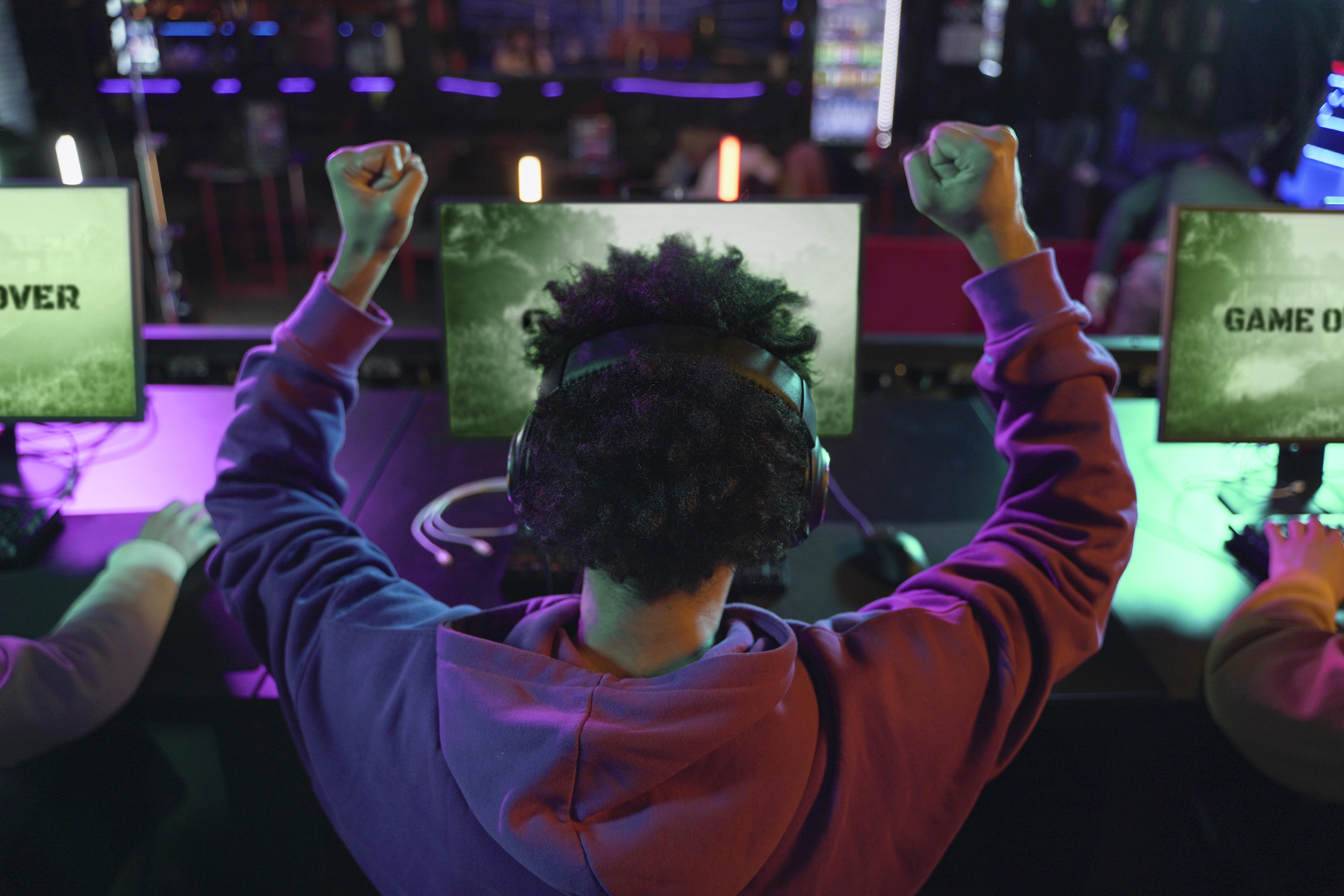To generate revenue from games, all game developers and publishers need to dive into new game monetization strategies, which include premium versions, removing ads, offer walls, etc. All these strategies are categorized in the digital monetization style. In other words, the game industry’s leaders don’t have to make a solid version of their games and leave them on the shelves. This is a great opportunity for a sustainable world, dynamic content, innovations, and more immersive gaming experiences.
The article will discuss the necessity of innovative digital monetization in the game industry, put some new models on the table, and how that leads you to the best monetization strategy and sets the best price.
The importance of game monetization
Sometimes, market necessities drive leaders in a specific way without knowing exactly why they are behind. In this case, most game publishers and developers follow digital game monetization just for market requirements. Other competitors do it this way, and audiences look for their desires digitally.
However, several reasons encourage the game industry’s leaders to monetize their products in such innovative strategies:
Developing innovation
Innovation is not possible unless resources are prepared to fund new ideas generation and examine gameplay mechanisms to figure out new possibilities. Developing innovation is necessary to go further from limitations, establish consumer engagement and loyalty, and shape the company’s identity.
Improving player experiences
Through game monetization, the possibility of working on quality by hiring professional designers, storytellers, developers, etc., comes true. In this case, a game company can develop their product based on players’ desires and satisfaction. So, it is important to specify a game monetization.
Enhancing inclusive games through free-to-play models
Digital monetization makes the free-play models possible and in this way, makes that game inclusive. This means that cost would not be an obstacle in front of people to play the game.
But free-play models are not charities. These games’ publishers need revenue from their products to enhance the innovation and development road. As a result, they strategize their monetization systems based on some digital models, like in-app purchases.
Viability of the gaming company
Maslow’s hierarchy of needs expresses everything about the necessity of viability. Before everything, gaming companies should meet their basic needs and survive. To guarantee viability, there is no choice except for game monetization. Digital models of monetization bring many possibilities to the revenue of gaming products.
They need to be masters of new monetization models and the strategies that lead them to choose the best one. Let’s briefly review digital monetization models.
Game monetization models on the table
Game monetization models have changed totally in recent decades. Publishers and developers mostly approach their game monetization strategy in digital ways. Digital monetization makes them able to survive, develop innovation, improve player experiences, and generate more inclusive content. Digital monetization often is categorized into three strategies and each strategy is embodied in different models.
In-app purchase game monetization
You, as a player, might face some features that require cost in free-to-play games, like a superpower to pass steps. This game monetization strategy is called in-app purchase; developers offer more features and content in exchange for money to boost players’ experiences. Mostly mobile games benefit from this model, but also many other game platforms, like PC games and or consoles, have facilitated in-app purchase models to use as well. In the following, there are different ways are introduced to get more familiar with that:
Battle-passes
Are you looking for rewards and or any exclusive content across a multiplayer game? It’s ready in the context of battle passes as a side of free-to-play model games. In the free-to-play model, developers implement some offer players a progression mechanism with rewards, challenges, etc., by cost.
Extra resources
Purchase and go further!
Games encourage players to purchase popups, in-game currency, and or other products by allowing them to take a step further and improve players experience. It doesn’t mean players are forced to buy these products to go further in the game progression mechanism, it means this opportunity is provided easier to reach more during play.
Premium version
Premium version of games often offers exclusive content and features that are not available for free. So, players have to buy the premium version to gain more special content and features that are not available for free.
Level packs
The next successful model that is tried in the context of in-app purchase game monetization strategy is Level packs. Players can level up their progression in the length of a game and extend their game experiences by purchasing the packs that game developers implemented before. You can find this model in mobile games and downloadable content (DLC) for both PC and console.
Advertising game monetization strategies
You might encounter promotional content like banner ads while playing a game. This is a very common way that developers and publishers consider to revenue their products. It’s not limited to just mobile games; it is recognizable even in PC and console titles.
Interstitials between levels
After successfully taking a level, when you prepare yourself for the next one, you suddenly see a full-screen promotional banner in front of you! This banner is defined as part of interstitials between levels to monetize the game. The banner would be an interactive material and or animated picture that engages you with the promotional content, as a player, for a while.
Banner ads
While playing a game, some little promotional banners always appear in the corner of the screen that promote services and or products properly. These banner ads are one other game monetization model that is used to gain money. In this model, players can continue to game, during the promotional banner appears and disappears.
Branded experiences
The promotional content would be integrated with the main content, the game that players experience. These mostly would appear in the context of challenges and events in the game sponsored by different brands.
Offerwalls
Developers might send a request to players in the game context that might apply to do something like a certain application in exchange for a reward, including in-game currency, etc. This game monetization model is called offerwalls.

Limitation removal monetization strategies
Game developers might consider the limitations that you, as a player, have to pay to remove them and go further. It is called Limitation removal that counts as the third mobile game monetization strategy.
More energy and time
You might need more energy and or a reward to take more steps and go to the next one. So, the only solution is to purchase more scores or a time-based boost. In this case, both the limitation and solution are created by developers to monetize their product.
Remove ads
Do you find the advertisements very annoying and intrusive? You probably should buy the free-ad version of the game to gain a satisfying experience and enjoy it. The remove-ads model is the other solution to make your product revenue in the case of games, specifically mobile games and or browser-based titles.
Following these many different game monetization strategies, vouchers would be mentioned as the last one. Vouchers and wallet payments mostly refer to the payment method. They are very common alternatives to transfer money while playing the game.
However, sometimes, more options cause more trouble! The sweet trouble appears in the following question: Which game monetization strategy is the best one to take? To figure out the answer, you previously should take some steps.
How do you shape influential game monetization strategy?
Many factors are integrated into choosing the most influential game monetization strategy that every developer and publisher should consider, including identifying target consumers, the A/B test results, etc. Here are four steps to decide about the game monetization strategy.
Understanding your target audience
Understanding the target audience strongly leads you to a suitable decision about the best monetization strategy. You should know that
- How do you identify your target audiences?
- Where do they live?
- How much money do they earn?
- What is the place of gaming in their entertainment expense baskets?
- Do they have access to all payment methods?
If you wish to get more information regarding the target audience topic, you can also check the article “Game Marketing Strategy: The Marketing Transformation in the Game Industry.“
After studies, the Angry Birds publishers found that people who live in middle-class countries prefer to play ad-based games. In expression, findings show that these players often cannot pay to remove ads, but they welcome watching ads while gaming. However, people in high-class countries preferably purchase in-app features. These people expect a high-quality game like Pokémon and their features like character skins, additional content, etc.
As a result, before deciding, you have to have a detailed picture of your target audience.
Retention vs. monetization
The monetization should not disturb the quality of games and player experiences. Games developers and publishers have to always consider the priority of player satisfaction rather than monetization strategies. If they take the remove-ad model to monetize their games, they should care about a smooth balance between the ads that are displayed during the game and the main content. Otherwise, the audience retention rate reduces. Furthermore, publishers must consider suitable rewards to make the user experience joyful.
A/B testing monetization
The A/B testing method always helps to reduce risks in many contexts. In the case of game monetization, the A/B testing monetization process refers to testing two monetization models and comparing user engagement, retention rates, etc. For example, developers can examine different prices for in-app purchase models and monitor conversion rates.
A/B testing monetization is a good solution to revise the whole monetization system, and changes, and measure the changes’ impact based on real data.
Setting fair pricing for in-app purchases and subscriptions
Ignoring employing a good strategy to set a price might cause product failure. If setting a very high amount of price or a low one, people probably refuse the product. Here are five pricing strategies
- Tiered pricing
- Localized pricing
- Value perception
- A freemium model with non-essential purchases
- Psychological pricing
Another article is needed to dive into all the various pricing strategies. But overall, whether the strategy is chosen, the price should be affordable and profitable at the same time.
To sum up, choosing the best game monetization requires a holistic knowledge of different monetization strategies and steps that should be taken properly. Without that, development is not possible, and game companies may fail.
Q&A
How do video games make money?
Video games generate revenue through various models, including direct sales, in-game purchases (microtransactions), subscriptions, and advertising. Additionally, revenue can be derived from downloadable content (DLC) and merchandise sales.
Which gaming monetization platform works better to revenue your product?
The effectiveness of a gaming monetization platform often depends on the game’s genre and target audience; for example, free-to-play games typically thrive on in-game purchases and ad revenue, while premium games benefit from direct sales and DLC. Platforms like Steam for PC games or mobile app stores (Google Play, App Store) can enhance visibility and facilitate transactions, boosting revenue.
What challenges are in the process of monetizing games as a service?
Monetizing games as a service faces challenges like balancing player engagement with aggressive monetization tactics and addressing potential player backlash over pay-to-win models. Additionally, maintaining ongoing content updates to retain subscriber interest can be resource-intensive and costly.
Sources: Playwire, Game Analytics, Setupad




